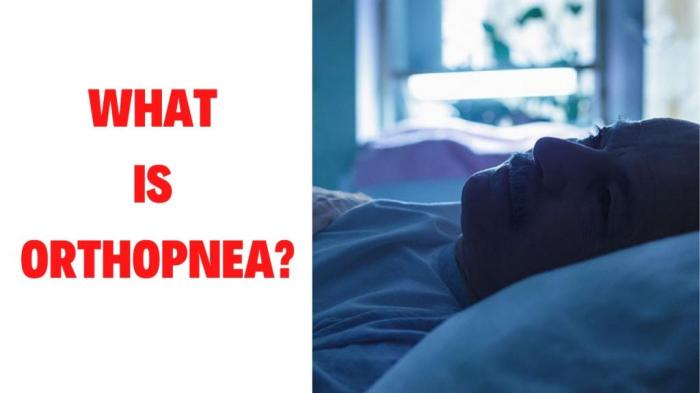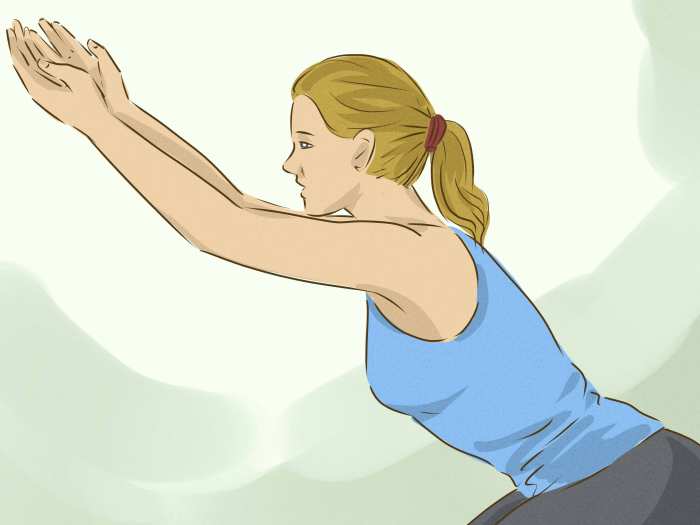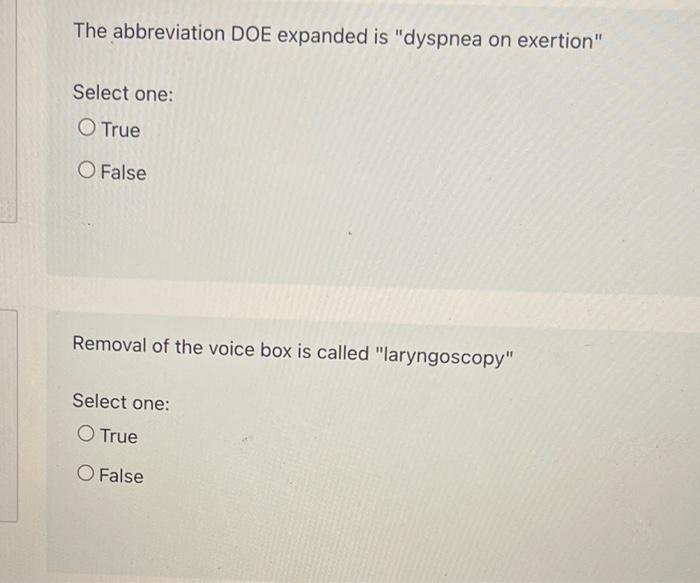Shortness of breath when lying down can be a distressing symptom, impacting daily life and sleep quality. This blog post delves into the various potential causes, from underlying medical conditions to lifestyle factors. We’ll explore the physiological mechanisms behind this symptom, and provide insights into diagnostic considerations, treatment strategies, and how to manage it effectively.
Understanding the different factors contributing to shortness of breath when lying down, like cardiovascular issues, respiratory problems, and sleep disorders, is crucial for getting appropriate medical attention. This article will discuss these factors in detail, helping you understand the potential reasons behind this discomfort.
Underlying Medical Conditions: Shortness Of Breath When Lying Down
Shortness of breath when lying down, medically termed orthopnea, can be a symptom of various underlying medical conditions. Understanding the potential causes and their associated physiological mechanisms is crucial for accurate diagnosis and appropriate treatment. This section will explore several medical conditions that may contribute to this symptom, categorized by organ system.
Cardiovascular Conditions
Cardiovascular problems are a frequent cause of orthopnea. The heart’s ability to pump blood efficiently is compromised in certain conditions, leading to fluid accumulation in the lungs. This fluid buildup, known as pulmonary edema, restricts lung expansion and creates a sensation of breathlessness, particularly when lying down.
- Congestive Heart Failure (CHF): CHF occurs when the heart struggles to pump blood effectively. This causes a buildup of fluid in the lungs, increasing pressure and reducing the lung’s ability to expand. Common symptoms include fatigue, swelling in the legs and ankles, persistent cough (often with frothy sputum), and rapid or irregular heartbeat.
- Pericarditis: Inflammation of the pericardium, the sac surrounding the heart, can cause fluid buildup and restrict the heart’s ability to expand. This can lead to orthopnea, often accompanied by chest pain, fever, and a distinctive pericardial friction rub (a sound heard during auscultation). The pain often worsens when lying down.
- Aortic stenosis: A narrowing of the aortic valve, which restricts blood flow from the heart to the body, can lead to increased pressure in the heart and potentially pulmonary edema. Patients often present with angina (chest pain), fatigue, and syncope (fainting).
Respiratory Conditions
Respiratory conditions can also contribute to shortness of breath when lying down, though often in combination with other symptoms. Obstructions in the airways, or reduced lung capacity, make breathing more challenging, especially when lying down as gravity can exacerbate these problems.
- Chronic Obstructive Pulmonary Disease (COPD): COPD, encompassing chronic bronchitis and emphysema, causes inflammation and narrowing of the airways. Lying down can worsen airflow obstruction, leading to shortness of breath. Patients often report a chronic cough, sputum production, and wheezing.
- Asthma: Asthma attacks can restrict airflow, making breathing difficult, particularly when lying down. Common symptoms include wheezing, chest tightness, and coughing, often occurring in patterns.
Neurological Conditions
Neurological conditions, though less common, can cause orthopnea through their impact on respiratory control and muscle function.
- Spinal cord injury: Damage to the spinal cord can affect the nerves controlling respiration, leading to difficulty breathing, especially when lying down. Patients may experience varying degrees of paralysis and sensory loss.
- Sleep apnea: While not always directly causing orthopnea, sleep apnea can exacerbate existing respiratory problems and worsen shortness of breath when lying down. This sleep disorder involves pauses in breathing during sleep, leading to daytime fatigue, snoring, and morning headaches.
Comparison Table
| Condition | Prevalence | Typical Presentation |
|---|---|---|
| Congestive Heart Failure | Common | Orthopnea, fatigue, swelling in extremities, cough, rapid heartbeat |
| COPD | Common | Orthopnea, chronic cough, sputum production, wheezing |
| Asthma | Common | Orthopnea (especially during attacks), wheezing, chest tightness, coughing |
| Pericarditis | Less common | Orthopnea, chest pain (worsened by lying down), fever, pericardial friction rub |
| Spinal cord injury | Rare | Orthopnea, varying degrees of paralysis, sensory loss |
Respiratory Issues

Shortness of breath when lying down, especially after addressing underlying medical conditions, often points to respiratory issues. Understanding the specific respiratory problems contributing to this symptom is crucial for effective diagnosis and treatment. This section explores various respiratory conditions, their pathophysiology, and the differences in symptom presentation between acute and chronic cases.Respiratory conditions can manifest in a wide range of ways, impacting the efficiency of oxygen intake and carbon dioxide expulsion.
The body’s natural response to these issues often includes the need to assume positions that facilitate breathing, such as sitting upright or leaning forward.
Respiratory Conditions Triggering Shortness of Breath While Lying Down
Various respiratory conditions can trigger shortness of breath, particularly when lying down. These conditions often involve changes in lung function or airway constriction. Asthma, chronic obstructive pulmonary disease (COPD), and various forms of pneumonia are prominent examples.
- Asthma: Characterized by airway inflammation and narrowing, asthma can exacerbate when lying down due to the effect of gravity on the airways. The decreased chest expansion and altered lung mechanics can restrict airflow, leading to shortness of breath. This is particularly common in individuals with poorly controlled asthma.
- Chronic Obstructive Pulmonary Disease (COPD): COPD encompasses conditions like emphysema and chronic bronchitis, marked by progressive lung damage. Lying down can worsen the effects of these conditions by reducing the effectiveness of the diaphragm and chest muscles in expanding the lungs. The loss of lung elasticity further restricts airflow and triggers shortness of breath.
- Pneumonia: Infections or inflammations of the lung tissue, such as pneumonia, can cause fluid buildup and impair lung function. This reduced lung capacity and the increased effort required for breathing frequently lead to shortness of breath, particularly when lying down, as gravity pulls fluid into the lower lung regions.
- Pulmonary Edema: Fluid buildup in the lungs, often a consequence of heart failure, can significantly impair lung function. The increased pressure on the alveoli restricts oxygen exchange, and the fluid accumulation makes it harder to breathe, especially when lying down. Patients with heart failure often experience this.
- Pleurisy: Inflammation of the lining of the lungs (pleura) can cause significant pain and discomfort, leading to shallow breathing. This discomfort can worsen when lying down, as it can exacerbate the pain.
Acute Versus Chronic Respiratory Problems
The presentation of shortness of breath differs significantly between acute and chronic respiratory problems.
- Acute Respiratory Problems: Acute problems, like pneumonia or an asthma attack, often manifest with a sudden onset of severe shortness of breath, accompanied by other symptoms such as fever, cough, or chest pain. The symptoms can escalate rapidly, requiring immediate medical attention.
- Chronic Respiratory Problems: Chronic conditions like COPD typically present with gradual worsening of shortness of breath over time. Patients might initially experience shortness of breath only with exertion, but it progressively worsens to the point where it’s present even at rest. This gradual deterioration is a key indicator of chronic respiratory disease.
Diagnostic Procedures
Several diagnostic procedures can help identify respiratory causes of shortness of breath.
- Physical Examination: A thorough physical examination, including auscultation (listening to lung sounds) and assessing vital signs, is often the initial step. This helps identify any abnormalities in lung function or other signs suggestive of respiratory disease.
- Pulmonary Function Tests (PFTs): These tests measure lung capacity and airflow, providing valuable information about the severity and nature of any respiratory impairment.
- Chest X-rays: X-rays can reveal abnormalities in lung tissue, such as fluid buildup, pneumonia, or tumors, which can contribute to shortness of breath.
- CT Scans: Computed tomography (CT) scans offer more detailed images of the lungs and chest, aiding in the diagnosis of more complex conditions.
- Blood Tests: Blood tests can help identify infections, inflammation, or other underlying medical conditions that may contribute to respiratory symptoms.
Typical Progression of Respiratory Illnesses
The following table illustrates a general progression of respiratory illnesses and how shortness of breath might change over time. Note that this is a general guideline and individual experiences can vary.
| Illness Stage | Symptoms | Shortness of Breath Progression |
|---|---|---|
| Early Stage | Mild cough, slight shortness of breath with exertion | Occasional shortness of breath, mainly during physical activity |
| Intermediate Stage | Increased coughing, more frequent shortness of breath | Shortness of breath occurs with less exertion, sometimes at rest |
| Late Stage | Severe cough, significant shortness of breath, fatigue | Persistent and significant shortness of breath, even at rest; difficulty breathing in any position |
Cardiovascular Factors
Shortness of breath when lying down can have several cardiovascular origins. Understanding these factors is crucial for accurate diagnosis and appropriate treatment. This section delves into specific cardiovascular issues that may cause this symptom, emphasizing their underlying mechanisms, manifestations across different populations, and differentiation from other conditions.Cardiovascular diseases are a significant contributor to shortness of breath, particularly when exacerbated by the horizontal position.
This occurs due to changes in blood flow and fluid distribution within the body. As we recline, the fluid in our body tends to shift towards the lower parts. This shift can put extra strain on the heart’s ability to pump blood effectively, leading to breathlessness. The heart’s efficiency in managing this fluid shift and circulating oxygenated blood is directly linked to the manifestation of the symptom.
Heart Failure
Heart failure is a condition where the heart is unable to pump enough blood to meet the body’s needs. This can lead to a buildup of fluid in the lungs, causing shortness of breath, particularly when lying down. The underlying mechanism involves the heart’s reduced ability to effectively eject blood, leading to increased pressure and fluid accumulation in the pulmonary circulation.
Patients may experience orthopnea, a condition where breathing is easier when sitting or standing.
Congestive Heart Failure (CHF)
Congestive heart failure (CHF) is a more severe form of heart failure, where the heart’s inability to pump blood effectively leads to fluid buildup in various parts of the body. This fluid accumulation can occur in the lungs, causing shortness of breath, particularly when lying down. This is often accompanied by other symptoms like swelling in the legs and ankles.
Coronary Artery Disease (CAD)
Coronary artery disease (CAD) involves the narrowing of the arteries that supply blood to the heart. While not always directly causing shortness of breath when lying down, CAD can contribute to heart failure, which in turn exacerbates the symptom. The underlying mechanism is the reduced blood flow to the heart muscle, which can compromise the heart’s ability to pump efficiently.
In individuals with CAD, the symptoms may manifest more intensely during exertion or stress, potentially leading to shortness of breath.
Valvular Heart Disease
Valvular heart disease involves abnormalities in the heart valves, affecting the efficient flow of blood. Problems with the heart valves can sometimes lead to fluid buildup in the lungs, causing shortness of breath when lying down. The specific mechanism depends on the affected valve and its ability to regulate blood flow through the heart chambers. For example, mitral valve stenosis may restrict blood flow from the left atrium to the left ventricle, potentially contributing to pulmonary congestion.
Age and Gender Differences
The manifestation of cardiovascular issues causing shortness of breath when lying down can differ based on age and gender. For example, older adults may experience more gradual symptom onset, while younger individuals may present with more acute symptoms. Additionally, women may experience different symptom presentations compared to men, although further research is needed to fully elucidate these differences.
This can be attributed to factors like hormonal variations and physiological differences.
Comparing Symptoms of Cardiovascular Conditions
| Condition | Shortness of Breath (Lying Down) | Other Common Symptoms ||——————–|———————————|———————————|| Heart Failure | Gradual or sudden onset, worsening with recumbency, often accompanied by edema | Fatigue, weakness, rapid or irregular heartbeat, cough, swelling in extremities || Coronary Artery Disease | May or may not be present, often triggered by exertion or stress | Chest pain, discomfort, fatigue, dizziness, shortness of breath during exertion || Valvular Heart Disease | May be present, often associated with specific valve dysfunction | Chest pain, palpitations, heart murmurs, fatigue, dizziness |
Lifestyle Factors and Cardiovascular Health
Lifestyle factors play a crucial role in cardiovascular health. The impact on shortness of breath when lying down is often related to how these factors influence the heart’s ability to pump blood effectively and manage fluid distribution. A healthy lifestyle, including a balanced diet, regular exercise, and stress management, can significantly reduce the risk of cardiovascular issues and mitigate the symptom.
| Lifestyle Factor | Potential Impact on Cardiovascular Health | Impact on Shortness of Breath |
|---|---|---|
| Diet (High in saturated fat, cholesterol) | Increased risk of atherosclerosis, high blood pressure | Increased likelihood of heart failure and associated shortness of breath |
| Physical Inactivity | Increased risk of obesity, high blood pressure | Increased strain on the heart, potentially leading to shortness of breath |
| Smoking | Damage to blood vessels, increased risk of blood clots | Increased risk of cardiovascular events and shortness of breath |
| Stress | Increased blood pressure, heart rate | Potential exacerbation of existing cardiovascular issues and increased shortness of breath |
| Obesity | Increased risk of high blood pressure, high cholesterol | Increased strain on the heart, potentially leading to shortness of breath |
Other Potential Causes
Beyond respiratory and cardiovascular issues, several other medical conditions can contribute to shortness of breath when lying down. Understanding these potential culprits is crucial for accurate diagnosis and effective treatment. Sleep disorders, certain infections, and fluid retention can all play a role in this symptom, often in intricate ways. This section delves into these potential causes, examining their pathophysiology and the symptoms they may present.
Sleep Disorders, Shortness of breath when lying down
Sleep disorders, particularly obstructive sleep apnea (OSA), frequently manifest with shortness of breath when lying down. This occurs due to the cyclical nature of apnea and the associated disruption of breathing patterns during sleep.
Obstructive sleep apnea, characterized by pauses in breathing during sleep, disrupts oxygen levels and carbon dioxide balance. This disturbance, in turn, can lead to an increase in heart rate and blood pressure, causing the body to struggle to maintain adequate oxygenation while lying down. Individuals with OSA may experience excessive daytime sleepiness and other symptoms such as morning headaches and dry mouth, often worsening when lying down.
Fluid Retention
Fluid retention, a common symptom associated with various medical conditions, can contribute to shortness of breath, especially when lying down. When fluid accumulates in the lungs (pulmonary edema) or throughout the body (peripheral edema), it can compress the airways and reduce the lung’s capacity to expand, leading to breathlessness.
Conditions like congestive heart failure, kidney disease, and liver cirrhosis often cause fluid retention. In these instances, the excess fluid, accumulating in the interstitial spaces, restricts lung expansion and makes breathing more difficult, particularly when lying down as gravity can cause fluid to pool in the lower portions of the body.
Infections
Certain infections, such as pneumonia or bronchitis, can also cause shortness of breath when lying down. Inflammation and fluid accumulation in the lungs, resulting from these infections, restrict airflow and increase the effort required to breathe. The position of lying down can exacerbate these effects, as gravity can cause fluid to pool in the lower portions of the lungs.
Summary Table: Sleep Disorders and Shortness of Breath
| Sleep Disorder | Symptoms (lying down) | Risk Factors | Impact |
|---|---|---|---|
| Obstructive Sleep Apnea (OSA) | Intermittent pauses in breathing, gasping, snoring, morning headaches, dry mouth, daytime sleepiness | Obesity, enlarged tonsils, family history, nasal congestion | Disrupts oxygen levels, increases heart rate and blood pressure, making breathing more challenging when lying down |
| Restless Legs Syndrome (RLS) | Uncomfortable sensations in the legs, urge to move them, difficulty falling asleep | Genetics, iron deficiency, pregnancy, neurological conditions | Can cause frequent awakenings, leading to daytime sleepiness and making breathing more difficult when lying down due to the associated sleep disruption |
| Insomnia | Difficulty falling asleep, staying asleep, or waking up too early, increased anxiety | Stress, anxiety, poor sleep hygiene, medications | Impairs sleep quality, resulting in daytime fatigue and potentially making breathing more difficult when lying down due to the associated sleep deprivation. |
Diagnostic Considerations
Pinpointing the precise cause of shortness of breath when lying down requires a multifaceted approach. A thorough evaluation considers the patient’s medical history, physical examination findings, and various diagnostic tests. This multifaceted approach allows healthcare professionals to differentiate between various potential underlying conditions and arrive at an accurate diagnosis.
Importance of Patient History and Physical Examination
A comprehensive patient history is crucial. This involves detailed questioning about the onset, duration, and characteristics of the shortness of breath, including factors that exacerbate or alleviate the symptom. For example, understanding if the shortness of breath is worse at night, after exertion, or in specific positions, like lying down, can significantly narrow down potential diagnoses. The physical examination provides essential objective data, including assessment of vital signs, lung sounds, heart sounds, and general appearance.
The physical examination complements the patient’s narrative and helps confirm or rule out specific possibilities. A detailed history and thorough physical examination form the cornerstone of the diagnostic process.
Diagnostic Tests
Various diagnostic tests can be used to further investigate the cause of shortness of breath when lying down. These tests provide objective data to support or refute suspected diagnoses.
Ever noticed shortness of breath when you lie down? It can be a real pain, especially at night. While I’m not a doctor, some research suggests that using the best hair oils for every hair type can actually be a surprisingly effective way to ease your breathing issues. Things like finding the right oil for your hair texture can be a surprisingly helpful way to get better sleep.
So, if you’re curious about natural solutions, check out the best hair oils for every hair type – it might just give you a better night’s sleep and relief from that pesky shortness of breath when lying down.
- Chest X-ray: A chest X-ray is a non-invasive imaging technique that visualizes the structures of the chest, including the lungs, heart, and major blood vessels. It can reveal abnormalities like pneumonia, pleural effusion, or pneumothorax. Limitations include that it may not detect subtle or early-stage conditions. Potential complications are minimal, limited to the discomfort of the procedure.
- Electrocardiogram (ECG): An ECG measures the electrical activity of the heart, allowing for detection of arrhythmias, myocardial ischemia, or other cardiac abnormalities. Limitations include that it may not detect all cardiac conditions, especially subtle ones. Potential complications are rare, but some individuals may experience discomfort during the procedure.
- Echocardiogram: An echocardiogram is an ultrasound examination of the heart. It provides detailed images of the heart’s structure and function, allowing for the evaluation of cardiac valve function, chamber size, and ejection fraction. Limitations include that it may not detect all cardiac issues, especially those that are subtle. Potential complications are rare and primarily limited to the discomfort of the procedure.
- Pulmonary Function Tests (PFTs): PFTs assess the function of the lungs, including lung volumes, capacities, and airflow. They can help differentiate between obstructive and restrictive lung diseases. Limitations include that they may not accurately reflect the severity of certain conditions, and they might not be suitable for patients with significant limitations in cooperation. Potential complications are minimal, but individuals with pre-existing respiratory conditions should be cautious.
- Blood Tests: Blood tests can provide valuable information regarding the presence of infections, inflammation, or electrolyte imbalances. Examples include complete blood count (CBC), blood chemistry panels, and specific markers for various conditions. Limitations include that blood tests are not definitive for all conditions. Potential complications are usually minor, but patients with bleeding disorders or those on blood thinners should be cautious.
Evaluation of Vital Signs and Oxygen Saturation
Monitoring vital signs, including heart rate, blood pressure, respiratory rate, and temperature, provides crucial information about the patient’s overall physiological status. Oxygen saturation levels (SpO2) are particularly important, as desaturation can be a significant indicator of underlying respiratory or cardiovascular issues. These measurements can provide real-time insights into the severity of the shortness of breath and help guide the diagnostic process.
Ever experienced shortness of breath when lying down? It can be a tricky symptom, and while sometimes it’s just a minor issue, it’s definitely worth exploring. Sometimes, a diet rich in calcium, like the calcium found in foods like foods with more calcium than milk , can help with various bodily functions. Ultimately, if this shortness of breath persists, it’s crucial to consult a doctor for a proper diagnosis.
Diagnostic Workup Steps
| Step | Action |
|---|---|
| 1 | Obtain detailed patient history and perform a thorough physical examination. |
| 2 | Measure vital signs and oxygen saturation (SpO2). |
| 3 | Order appropriate diagnostic tests based on the initial evaluation (e.g., chest X-ray, ECG, blood tests). |
| 4 | Interpret results and consider additional tests based on the initial findings. |
| 5 | Collaborate with specialists if necessary (e.g., cardiologist, pulmonologist). |
Lifestyle and Environmental Factors

Shortness of breath when lying down can stem from various lifestyle and environmental factors, interacting with underlying health conditions to exacerbate the symptom. Understanding these external influences can aid in identifying potential triggers and contributing factors. This section delves into the impact of lifestyle choices, medications, and environmental elements on this discomfort.
Potential Lifestyle Factors
Several lifestyle factors can contribute to shortness of breath when lying down. Obesity, for instance, can increase the strain on the respiratory system, making it harder to breathe, especially when lying flat. The extra weight can compress the lungs and make it difficult for the diaphragm to function optimally. Furthermore, certain medications, including some diuretics and certain types of blood pressure medications, can sometimes lead to fluid retention, which can exacerbate the sensation of shortness of breath, especially when lying down.
Experiencing shortness of breath when lying down can be a concerning symptom, and it’s often a sign of underlying issues. Sometimes, this can be linked to a less common kidney cancer like papillary renal cell carcinoma, which requires medical attention. Understanding the possible causes, from mild conditions to more serious ones like papillary renal cell carcinoma , is crucial for seeking appropriate medical care.
Ultimately, if you’re experiencing this symptom, it’s always best to consult a doctor to get a proper diagnosis and treatment plan.
Environmental Triggers
Environmental factors play a significant role in respiratory health. High altitudes, for example, reduce the amount of oxygen available in the air, potentially triggering shortness of breath in susceptible individuals. Exposure to allergens, such as pollen or dust mites, can also inflame the airways, making breathing more challenging. Air pollution, particularly containing particulate matter, can irritate the lungs, leading to difficulty breathing, which can be worsened when lying down.
Impact of Sleep Positions
The position in which we sleep can also affect the sensation of shortness of breath. Certain positions might inadvertently exacerbate existing respiratory issues. For instance, sleeping on one’s back can potentially compress the lungs, leading to a feeling of breathlessness. Conversely, sleeping on one’s stomach might put pressure on the chest and abdomen, making breathing more difficult.
The ideal sleep position can vary depending on individual factors.
Comparison of Sleeping Positions and Shortness of Breath
| Sleeping Position | Potential Effect on Shortness of Breath | Example |
|---|---|---|
| Back | Potential for lung compression, leading to increased breathlessness, especially if there is underlying respiratory or cardiovascular issue. | An individual with mild asthma might experience slightly more noticeable shortness of breath when sleeping on their back compared to their side. |
| Stomach | Potential for chest and abdominal pressure, hindering breathing, especially if there are pre-existing chest conditions or obesity. | A person with severe sleep apnea might find it harder to breathe when lying on their stomach due to the pressure on the chest. |
| Side (Left or Right) | Generally, the least likely position to exacerbate shortness of breath. | Most individuals find that lying on their side provides the most comfortable breathing experience, alleviating potential pressure on the chest and lungs. |
Management Strategies
Shortness of breath when lying down, a distressing symptom, requires a multifaceted approach. Effective management hinges on identifying the underlying cause and tailoring a strategy to address it. This often involves a combination of medications, lifestyle modifications, and adherence to medical advice. A proactive and collaborative approach between the patient and healthcare provider is crucial for optimal outcomes.
Medication Management
Medications play a significant role in managing shortness of breath, particularly when related to underlying conditions. Diuretics, for instance, are often prescribed to reduce fluid buildup in the lungs and surrounding tissues, easing breathing difficulties. Bronchodilators, on the other hand, are commonly used to relax the airways, improving airflow and alleviating constriction. The specific type and dosage of medication will depend on the diagnosed cause and individual patient response.
Lifestyle Modifications
Adopting certain lifestyle changes can significantly impact the severity and frequency of shortness of breath. Elevating the head of the bed can help improve breathing by reducing the strain on the heart and lungs. Avoiding triggers, such as allergens or certain foods, is also important. Regular exercise, within the limits of one’s abilities and in consultation with a healthcare professional, can improve overall cardiovascular health and respiratory function.
Maintaining a healthy weight, through balanced nutrition and physical activity, can further support the body’s ability to manage the condition.
Adherence to Medical Advice
Strict adherence to prescribed treatments is paramount. Regular check-ups, medication schedules, and any recommended lifestyle changes are crucial for managing the condition effectively. This includes following dietary restrictions, attending follow-up appointments, and promptly reporting any changes in symptoms to the healthcare provider. Understanding the rationale behind each treatment recommendation helps build trust and ensures that the treatment plan is followed diligently.
Treatment Options Based on Cause
| Underlying Cause | Potential Treatment Options |
|---|---|
| Heart Failure | Diuretics, ACE inhibitors, beta-blockers, lifestyle modifications (sodium restriction, fluid management). |
| Asthma | Bronchodilators, inhaled corticosteroids, avoidance of triggers, lifestyle modifications (allergen avoidance). |
| Chronic Obstructive Pulmonary Disease (COPD) | Bronchodilators, inhaled corticosteroids, oxygen therapy, pulmonary rehabilitation, smoking cessation. |
| Anxiety | Relaxation techniques, counseling, medication (as prescribed by a doctor). |
| Obesity | Weight loss strategies, exercise, medication (if necessary), lifestyle modifications (healthy diet, portion control). |
Epilogue
In conclusion, shortness of breath when lying down can stem from a range of causes, necessitating a thorough evaluation by a healthcare professional. Identifying the root cause is vital for effective management and treatment. By understanding the interplay of medical conditions, lifestyle factors, and environmental influences, you can take proactive steps towards alleviating this discomfort and improving your overall well-being.







